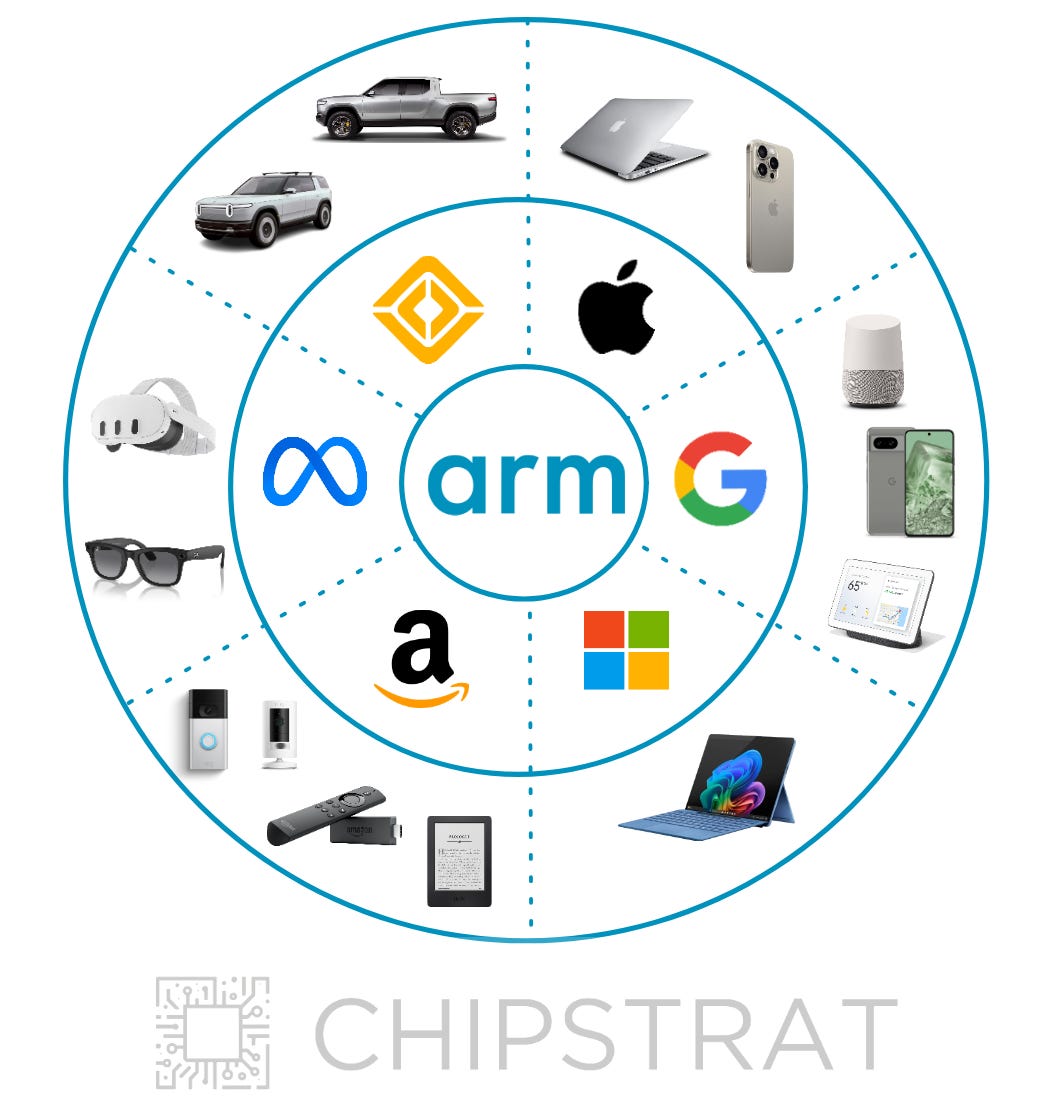
Qualcomm Files Global Antitrust Complaints Against Arm Over Licensing Dispute and Access to Chip Design Technology
A Battle for the Blueprint: Inside Qualcomm’s Global Antitrust Blitz Against Arm
As the Semiconductor World Shifts, Two Giants Clash Over the Future of Chip Design and IP Power
In the high-stakes realm of semiconductor design, where intellectual property is the lifeblood of innovation, a global confrontation is unfolding that could redraw the contours of the industry. Qualcomm, a dominant force in mobile and AI chipsets, has launched a sweeping antitrust campaign against Arm, the British chip architecture powerhouse whose designs underpin billions of devices worldwide.

The battleground spans three continents, with regulatory complaints filed in Brussels, Washington, and Seoul. But the implications of this clash reach far beyond the courtroom. At stake is the future of chip licensing, competitive access to foundational technology, and the delicate balance of power in a sector increasingly critical to global economic and geopolitical interests.
From Partnership to Proxy War: The Breakdown of a Critical Alliance
For decades, Arm and Qualcomm maintained a symbiotic relationship. Arm supplied the blueprint; Qualcomm turned it into silicon that powered smartphones, tablets, and more recently, AI-powered PCs. That relationship began to fray after Qualcomm’s 2021 acquisition of Nuvia, a startup known for its custom high-performance CPU cores.
Arm operates primarily by designing semiconductor processor architectures and licensing this intellectual property (IP) to other companies. Unlike traditional semiconductor companies, Arm is fabless (doesn't manufacture chips), earning revenue through license fees and royalties from partners who use its designs in their own products.

At the heart of the dispute is Qualcomm’s use of Nuvia’s Oryon cores in its Snapdragon X series of processors—cores that Arm argues fall outside its original licensing agreement. Though a Delaware jury ruled in December 2024 that Qualcomm did not breach its agreements when using Oryon in consumer products, the court deadlocked on whether Nuvia violated Arm’s terms in its early server processor designs. Arm is now pursuing a retrial.

That partial legal win wasn’t enough for Qualcomm. With Arm signaling an intent to tighten licensing controls and raise royalty rates, Qualcomm struck back—not with another lawsuit, but with a global regulatory offensive.
“An Attempt to Redraw the Rules of the Game”
According to filings reviewed by regulators in the U.S., EU, and South Korea, Qualcomm accuses Arm of deviating from its long-standing “open network” model by restricting access to its designs and selectively targeting licensees with aggressive contract renegotiations. The campaign frames Arm’s evolving business strategy as not only anti-competitive, but potentially destabilizing to the innovation pipeline that has historically fueled the semiconductor boom.
“This is more than just about two companies arguing over contracts,” said one industry expert familiar with the filings. “It’s an attempt to redraw the rules of the game in chip design, right at the moment when the industry is reinventing itself around AI, edge computing, and energy efficiency.”
Semiconductor Intellectual Property (IP) refers to reusable units of logic, cell, or chip layout designs, often called IP cores, that are typically licensed for use in creating larger semiconductor chips. Utilizing pre-designed and verified IP blocks significantly accelerates the chip design process and reduces development costs and risks.
While Qualcomm currently pays Arm about $300 million annually in licensing fees, insiders suggest the monetary aspect is only part of the equation. The broader concern is about control—over product roadmaps, access to essential IP, and the latitude to innovate without the looming threat of legal retribution or changing royalty terms.
Arm’s Calculated Risk: Monetize or Mutate?
For Arm, the battle is about asserting ownership in a market that increasingly views its designs as a utility rather than a premium product. Following its IPO, the company has pushed to increase per-chip royalties and assert tighter control over how licensees use its architecture—especially those, like Qualcomm, who have begun building custom silicon on top of Arm’s foundation.

But with Qualcomm’s campaign now drawing regulator attention, that strategy faces material risk.
“If the authorities find Arm is acting like a gatekeeper in ways that harm competition, we could see a rollback of its royalty ambitions,” said a legal analyst who monitors global antitrust developments. “That would hit not just revenues, but the company’s valuation model and its long-term monetization strategy.”
Market reaction reflects that risk. In the wake of Qualcomm’s antitrust filings, Arm’s shares have dipped, while Qualcomm’s have remained resilient—a sign investors are betting Qualcomm’s aggressive posture may pay off.
The Broader Implications: IP Licensing on Trial
While the legal specifics may seem arcane, the ripple effects of this clash could touch nearly every corner of the tech world. Arm’s architecture is used by Apple, Samsung, Amazon, and countless others. Any shift in how its IP is licensed—or regulated—could disrupt product timelines, supply chain plans, and cost structures across the board.

For the semiconductor industry, the case represents a critical inflection point. In recent years, regulatory scrutiny of dominant tech players has intensified, with increasing emphasis on how essential technologies are priced and distributed. Qualcomm’s campaign is among the first to position a historically cooperative IP relationship as a potential antitrust concern.
Antitrust behavior in Tech IP often centers on licensing practices, such as refusing access to crucial IP under the essential facility doctrine. Issues also arise when licensing terms, particularly for standard-essential patents, violate Fair, Reasonable, and Non-Discriminatory (FRAND) principles, potentially harming competition.
If regulators side with Qualcomm, it could open the floodgates to similar challenges by other Arm licensees—many of whom have remained silent, but are likely watching closely. Conversely, a rejection of Qualcomm’s claims could embolden Arm to further tighten its licensing grip, setting a precedent that reshapes the power dynamics between IP holders and chip designers.
Strategic Realignment or Regulatory Overreach?
Qualcomm’s global campaign is as much about shaping perceptions as it is about legal remedies. By framing Arm’s evolving business model as a threat to innovation, Qualcomm is betting regulators will take the long view—prioritizing open access over proprietary monetization.
But it’s not without risk. Regulatory investigations can stretch for years, and there’s no guarantee of a favorable ruling. Moreover, Qualcomm’s high-profile challenge could draw attention to its own licensing practices, which have previously come under regulatory fire in both the U.S. and Europe.
“There’s a fine line between strategic self-defense and inviting scrutiny on yourself,” said one policy analyst tracking the case. “Qualcomm knows this, but clearly sees the stakes as worth the gamble.”
Future Shock: What Comes Next for the Ecosystem
Regardless of legal outcomes, the Qualcomm-Arm dispute is forcing a reckoning in how semiconductor IP is valued and controlled. Several experts believe the industry could bifurcate: one path where companies license Arm’s cores at higher rates under stricter conditions, and another where giants like Qualcomm or Apple invest more heavily in custom, in-house designs to escape the licensing tangle altogether.
There’s also speculation that Arm, under pressure, might accelerate plans to develop its own chips—a move that would pit it directly against longtime customers, and could unravel its historically “neutral supplier” status.
Either scenario would mark a seismic shift in the chip ecosystem.
“This isn’t a one-off fight,” said a veteran semiconductor investor. “It’s a preview of the next decade—where access to IP, regulatory power, and innovation speed all collide. The winners will be those who control their destiny, not just their designs.”
A Bellwether for the Industry’s Next Chapter
The outcome of Qualcomm’s antitrust blitz is still far from certain. But the implications are already reverberating through boardrooms, supply chains, and engineering labs worldwide. As AI computing, mobile connectivity, and edge processing drive demand for ever more customized silicon, the industry’s dependence on shared intellectual property models is being tested like never before.
For Qualcomm, the campaign is a high-stakes bet to maintain licensing leverage and preserve its ability to innovate without constraint. For Arm, it’s a test of how far it can stretch its value extraction model before regulators—or its customers—push back.
And for the rest of the tech world, this conflict could well determine the future shape of collaboration, competition, and control in one of the most strategically vital industries of the 21st century.